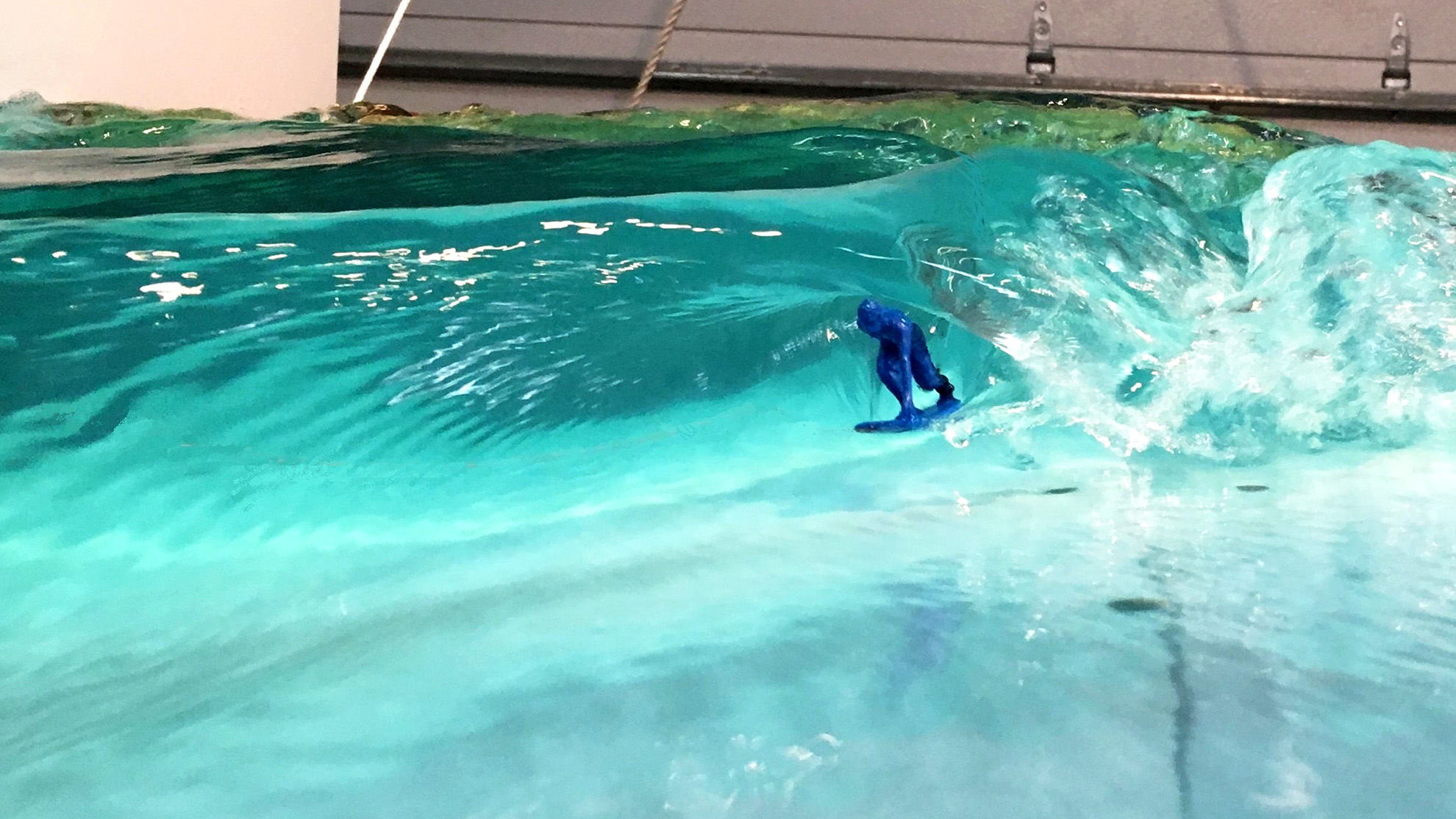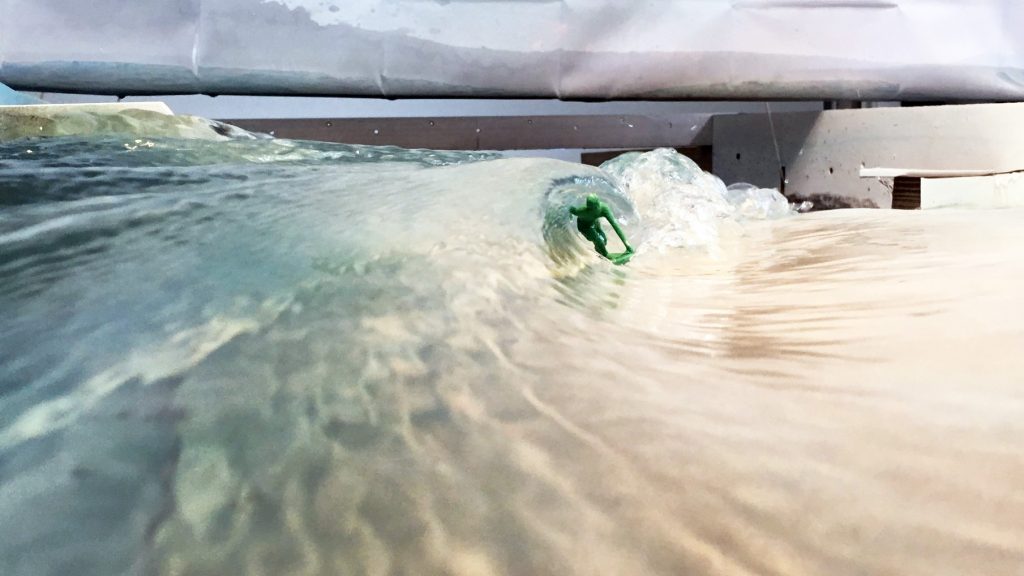Invention could revolutionize standing-wave technology

With the algae bloom of wave pool technologies emerging, we need solid metrics to distinguish each new addition. “Sick”, “Super Sick” and “Soooo Sick” work pretty well. But wave pool makers are engineers. They are tied to the empirical and typically shun such nomenclature.
One surefire distinction is “traveling wave” and “standing wave.” Kelly’s, Waco and the Cove are traveling waves displaying both longitudinal and transverse motions. Simply put, you travel a measurable distance when you surf one.
What is a standing wave? The Eisbach and Zambezi rivers are standing waves. You can surf the same wave for hours and not travel any longitudinal distance. Basically, you just stay in the same place.
Standing waves are typically dismissed when ocean surfers seek out human-made waves. Currently, there are a few companies making artificial standing waves. Both Citywave and Unit Park Teck, produce high-quality standing waves worthy of professional competitions.
Standing waves are favored for small-footprint locations. You only need a facility the size of a couple of tennis courts to build one. Meanwhile, a surfer covers several acres of ground to get a 45-second ride at Kelly’s wave.
But a new tech designed by Tanner Davis of River Surf Systems challenges the notion of a standing wave as being less desirable than a traveling wave. Davis reached out to us to challenge a WavePoolMag statement that “standing wave pools will never match Kelly Slater’s wave.”
Davis says they can adjust their wave with special gates. The gates affect the river water’s speed, depth and approach angle. The result is a variety of barrels from fat and square to thin-lipped and almond-shaped. The process can also produce slow beginner waves and wide-shouldered waves for carving turns.
While his tech is not yet full scale yet, from the images and videos we’ve seen, it’s decidedly different from current standing wave pools. And yes, you can get barrelled.
How did you get your idea?
My idea spawned while watching Greg Webber’s shrimp boat experiments. A superb
From there I applied some relativity to his set up and saw that it could work in a river with the boat sitting still and the water moving. The surfboard and the water don’t know which is moving and which is sitting still. The speed of the water over the fins is the same. The wave shape is the same. This is surfing.
I want to reiterate that the speed and shape must be the same as desirable ocean waves, otherwise, it won’t feel right, and it won’t surf right. Beauty is in the eye of the beholder. Trust your eyes.
Is your system more naturally surf-able than a Flowrider or a river wave?
It is considerably more surf-able. Flowriders feel like snowboarding on a bad snow day. Citywave is clearly better, but the Zambezi barrel or Skook
I built River Surf Systems to look like and compete with wave pools for a fraction of the cost. It uses no energy by comparison and is one-third the cost to build. It’s also free to the
Funding can come from government or philanthropists wishing to spur a sub-economy and social scene in their city. This is the proverbial “keeping kids off the street” by building a park and social fun area.
There are several preceding small-build examples (of standing waves). All are successful, all have budding social scenes, and all have independent surf shops far from the ocean.

Where can this new technology be installed?
This can be installed anywhere where there is enough water moving fast enough. Two ideal locations would be the Ruins wave in Ottawa and downtown Montreal. Their St Lawrence river is huge. Glenwood Springs in Colorado is another ideal location. They have a large wave there already. With a little effort, it could be the best river wave in the world and change the sport.
Another requirement is
When do we get to try it out?
I don’t think the funders want to own a full-scale prototype. When we build full-scale it will be open to the public. Too many variables to say when for now.
Trackback from your site.
Related Coverage
